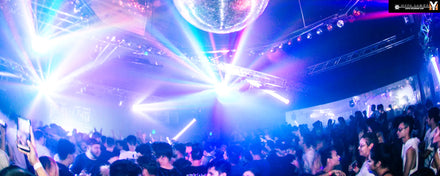Laser Light Show Systems Evolution

Sep 03, 2024
3 minute read
In recent years, laser show systems have been widely used in stage lighting setups, entertainment venues, outdoor laser lighting, and laser light shows. However, the application of laser lights and related technologies still lacks systematic technical guidance, leading to misunderstandings and waste in their usage, and the laser show effects are often not fully realized.
1. The Current Status of the Laser Light Market Domestically and Internationally
1.1 The History of Laser Show Systems

Laser show systems utilize a high-energy light source and advanced optical technology, controlled by computers, to create unique visual effects on customized media. Due to its high brightness, excellent shaping capabilities, vibrant colors, and strong directionality, laser technology has been widely applied in stage, outdoor advertising, media, and lighting design. With the further development of laser technology and related equipment, various forms of laser art have emerged. For example, Stone Mountain laser show has become a popular attraction, showcasing the versatility of laser lights in large-scale outdoor environments. Another notable event is the Taylor Swift laser show, which combines music and laser lights to create an unforgettable experience for fans.
1.2 The Development of Laser Show Systems in China

From initially importing large-scale laser equipment to developing patented laser products domestically, China’s laser show industry has made significant progress. The recent widespread use of RGB (full-color) laser systems has broken the monotony of traditional single-color green lasers, offering audiences a spectacular visual feast of sound, light, water, electricity, and color. However, there is still a lack of adequate understanding in the application of multimedia laser lights in China, and more effort is needed to fully and reasonably utilize laser lights.
2. Technical Features of Laser Show Systems

2.1 Technical Features of Laser Tubes
2.1.1 Power Description
The power of a laser tube generally refers to its output power, not the machine’s rated power. The industry commonly uses “mW” or “W” to denote laser output power, such as 20mW, 100mW, etc. Despite the low power consumption of laser lights, many people struggle to accurately understand laser power due to a lack of technical knowledge. For instance, a 100mW single green laser tube using the TC dual temperature control principle can have a lifespan of up to 10,000 hours, while one without this technology may only last 6,000 hours.
2.1.2 Brightness Description
The brightness of a laser tube is closely related to its wavelength, with common wavelengths including 532nm (green), 650nm (red), and 473nm (blue). Green is the brightest, while blue is the weakest. Full-color laser lights on the market achieve vibrant effects by combining different colored light sources through optical techniques. For example, yellow is created by mixing red and green light. Large beam laser devices also create "light column" effects by altering the beam diameter through special optical lenses.
2.2 Technical Features of the Control System in Laser Show Systems
2.2.1 Technical Features of Stepper Motors
Stepper motors, known for their precision and torque characteristics that vary with speed, are commonly used in fields that do not require high precision. However, as digital technology advances, the application of stepper motors in high-precision fields, such as laser animation scanning, still has certain limitations.
2.2.2 Technical Features of Galvanometers
Due to their high scanning speeds, galvanometers can smoothly render complex laser animations and are widely used in laser show systems. Galvanometers can achieve a scanning speed of up to 45kpps, making them far more effective than stepper motors for laser light show applications.
2.3 Applications of Optical Effect Lenses
Optical effect lenses use coated reflective surfaces to create unique visual effects by reflecting single laser beams into multiple beams. As technology has advanced, the application of reflection gratings and micro-motion gratings has become integral to laser show systems.
2.4 Applications of Digital Systems
Digital system combination devices (laser lights) utilize modern digital technology to customize laser systems according to customer requirements, combining different laser colors, power, and positions to maximize the performance of laser lights in stage settings. Currently, most laser show software used in China originates from Western countries, as domestic development in this area is still lacking.
3. Development Trends of Domestic Laser Show Systems
3.1 Development Trends of Small-Scale Laser Show Systems

In China, small-scale entertainment venues like nightclubs and bars have only started to use laser lights as auxiliary lighting, similar to PAR lamps and strobe lights. This is mainly due to the industry’s limited understanding of laser beam effects and programming systems. However, as knowledge of laser light applications increases, their significance in lighting and sound engineering will continue to grow. In the future, cooperation between laser light manufacturers and integrators will drive the widespread application of small-scale laser show systems.
3.2 Development Trends of Medium and Large-Scale Laser Show Systems

Medium and large-scale entertainment and performance venues currently have more mature applications of laser lights, often using high-power, single-color, or full-color laser lights. The development of laser technology has expanded the color range from single green or red to a broader spectrum, and some artists have started to use lasers in environmental design and artificial landscapes. However, to further advance the application of laser shows in the entertainment industry, manufacturers must innovate by upgrading both the software and hardware of laser products to better meet market demands. At the same time, by analyzing on-site conditions and combining the functions of existing products, manufacturers can create harmonized "light," "sound," and "color" atmospheres, pushing laser light show effects to their fullest potential.
